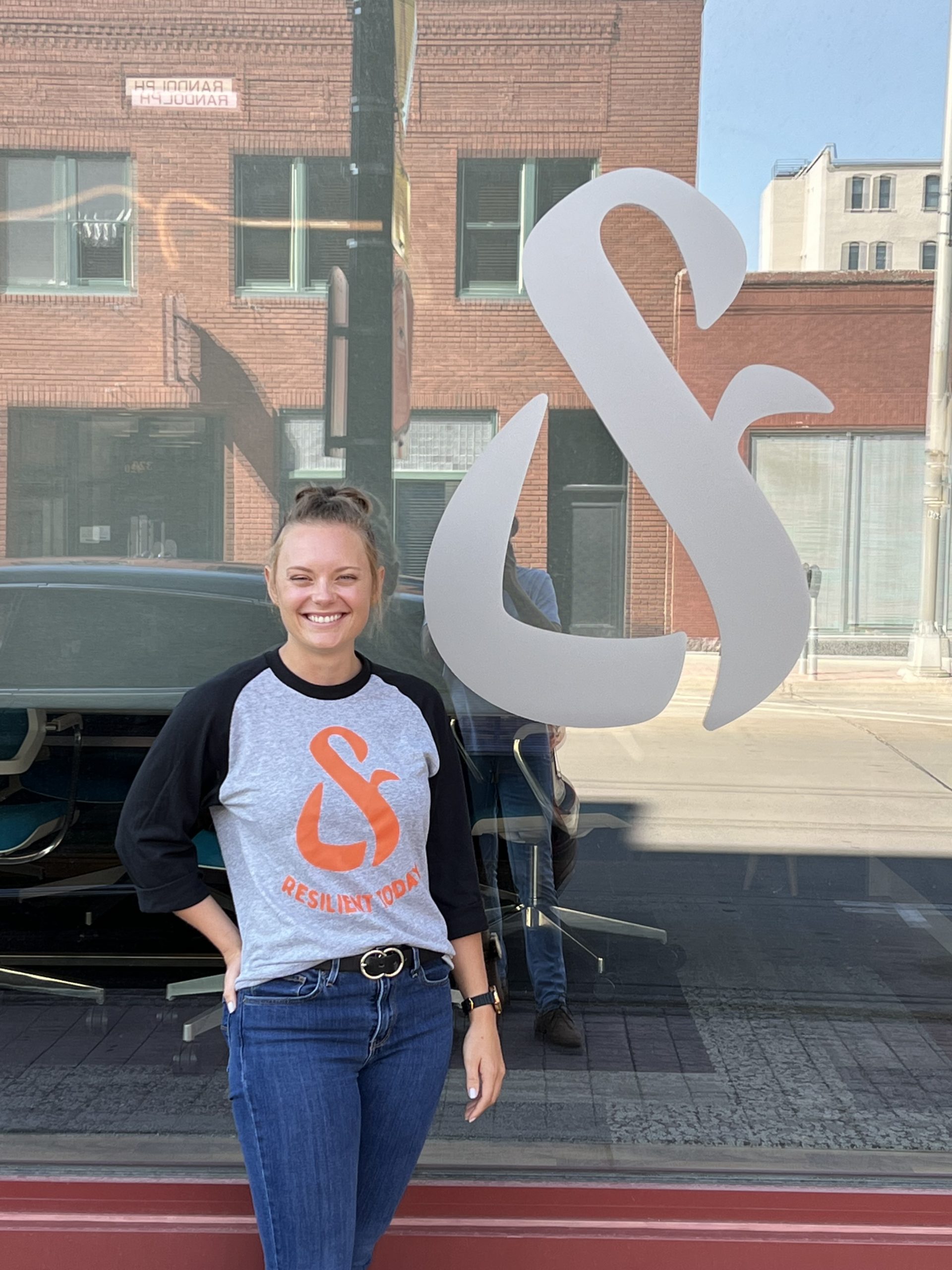Lost&Found’s new postvention work addresses a clear need in South Dakota
After Lost&Found took on the mission of the former Sioux Falls nonprofit Survivors Joining for Hope on August 1, 2022, Lost&Found’s staff didn’t have to wait long to start this new postvention services work.
Dakotah Jordan was hired as coordinator of Lost&Found’s new Survivors Joining for Hope program in September and, as of late January, has already assisted 13 families who have lost a loved one to suicide.

Dakotah Jordan is Lost&Found’s Survivors Joining for Hope Coordinator.
“Once we were able to get the word out about the program, the applications started coming in quicker than we initially expected,” Jordan said. “For the next two months, I was actively working on an application or talking to someone who just needed resource support nearly every week.”
This fast pace of requests for help from grieving families shows the need for postvention services in South Dakota, which had a record 202 suicides in 2021. “We cannot ignore the fact that we are losing people, and the ripple effect that has on the people and communities left behind,” Jordan said.
A renewed focus on postvention
When Lost&Found was founded in 2010, it first focused on postvention. “The group of young college students who launched the organization committed to raising funds, support, and awareness for those who experienced suicide loss,” said Erik Muckey, who was one of those young college students and now serves as Lost&Found’s CEO/Executive Director.
Its young leaders soon realized they needed to change their approach, in part because postvention work requires time and capacity that the startup organization could not sustainably provide. And so Lost&Found switched its focus to the suicide prevention work that has become the core of its mission.
The opportunity last year to take on the work of the nonprofit Survivors Joining for Hope, which had been serving suicide loss survivors for six years, was a way for Lost&Found to return to its initial desire to help those suffering from suicide loss.
This change was also a recognition that postvention isn’t a separate kind of work from suicide prevention; it is in fact one method of prevention. One reason for this is that people who lose a loved one to suicide are sometimes the people most motivated to try to prevent suicide in others, and they can become strong advocates for and practitioners of suicide prevention efforts to try to keep others from experiencing the pain they are experiencing. But another reason for seeing postvention work as suicide prevention is that the people left behind after a suicide are at increased risk of suicide themselves. In the midst of shock and grief, they may need resources that they don’t have the first idea how to find.
“Lost&Found cannot seek to prevent suicide without recognizing that postvention is prevention,” Muckey said. “We must support suicide loss survivors to prevent further loss of life and the immense grief and trauma that follows.”
The work of Survivors Joining for Hope
Lost&Found’s Survivors Joining for Hope (SJ4H) program prioritizes providing financial assistance to those who fit in Lost&Found’s target age demographics (10-34) in South Dakota, Minnesota, and Iowa, but all applications are considered. The people who have sought assistance from the program in recent months have had some things in common, Jordan said: “They are predominantly low-income families who have lost a male family member to suicide that need help paying off funeral expenses for their loved ones.”
Families can request up to $2,500 in assistance. While funeral expenses are the most common need for funding, families can also apply to the SJ4H program for help with other burial expenses, the cost of therapeutic and supportive services, biohazard cleanup, and other expenses related to a suicide loss.
“In addition to financial assistance, we seek to provide emotional support to anyone who has experienced a suicide loss,” Jordan said. “We talk with individuals and families about support groups, therapy options, peer support, and more that are available in their area. Our program isn’t just about financial support—it’s also about connection and making sure that these individuals don’t feel as isolated after a devastating loss.”
Eight families so far have asked for financial assistance. This pace of helping families will require more resources.
“As we continue to build this program, we are looking to host fundraisers in 2023 that will specifically provide funding for our financial assistance account,” Jordan said. “We will need to build relationships with donors that are passionate about supporting these families in need to continue to cash flow these needs moving forward. As we continue to get the word out about this program, we anticipate that the requests for assistance will only increase.”
Postvention policy services
The SJ4H program is one part of Lost&Found’s new Postvention services department. Lost&Found’s staff also assist college campuses with developing postvention policies and suicide response plans.
“When I was hired, we already knew that the region needed more support for policy development and suicide response plans on college campuses,” Jordan said. “Since August, our team has been researching and actively supporting one campus in South Dakota in developing a comprehensive suicide response plan and complimentary prevention and postvention policy. This work includes gathering resources and supportive services for faculty, staff, and students, as well as supporting them in all logistical planning such as protocols on how to communicate suicide loss to the campus community.
“Unfortunately, this type of policy development becomes a priority after a tragedy has occurred,” Jordan said. “As we build out this supportive service in our organization, we hope to proactively support our college campuses in their prevention and postvention policy development in order to save more lives across our region. Campus postvention work will be a priority for our department in 2023.”
Jordan said Lost&Found can also provide postvention policy assistance to other entities, such as communities or workplaces.
Support during a tragedy
For a variety of reasons, losing someone to suicide can make survivors feel very isolated. This feeling can make a terrible situation even worse, Jordan said.
“Often suicide brings up emotions like complicated grief, shame, anger, sadness, and more,” she said. “Postvention provides support so that people don’t have to go through those complicated emotions alone. People who are exposed to suicide are at a higher risk for suicide, so it is important that we provide support to them.”
It’s in this support that postvention becomes suicide prevention.
“The more that we can be open to conversations about suicide and the emotions that surround it, clear up misunderstandings, and prevent isolation, we can prevent future suicides from happening,” Jordan said. “While we at Lost&Found are trying to create more of that open conversation all of the time, the reality is that some of those conversations happen after a tragedy has occurred, and it is an opportunity to reach a new level of resilience and create a positive impact even when someone was lost.”
To learn more about Lost&Found’s Postvention department or to fill out a request for assistance, go here.

